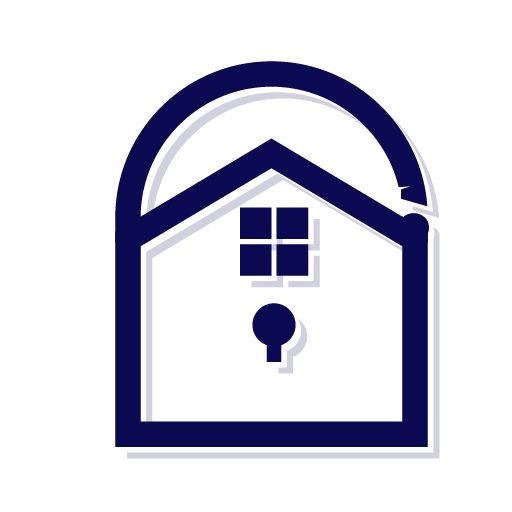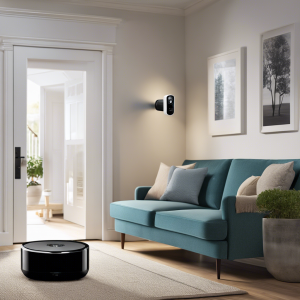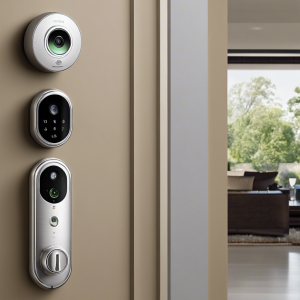Security system false alarms can be a major inconvenience for both homeowners and business owners alike. Whether it’s a faulty motion sensor or an accidental activation, the consequences can be frustrating and time-consuming.
However, there are effective strategies that can help reduce these false alarms and provide peace of mind. By understanding the causes of false alarms, conducting regular system maintenance, and implementing advanced technologies, such as video verification and mobile alerts, you can significantly minimize the occurrence of false alarms.
In this discussion, we will explore these strategies in detail, providing you with practical tips to ensure the reliability and effectiveness of your security system.
Understanding the Causes of False Alarms
The understanding of the causes of false alarms is crucial in effectively reducing security system errors and improving overall system reliability. By analyzing false alarm statistics and identifying common false alarm triggers, security professionals can take proactive measures to minimize false alarms and enhance the efficiency of security systems.
False alarm statistics provide valuable insights into the frequency and nature of false alarms. These statistics help security personnel identify trends and patterns, enabling them to develop targeted strategies for reducing false alarms. For instance, by examining the time of day or week when false alarms are most likely to occur, security experts can allocate resources accordingly and implement additional security measures during these periods.
Common false alarm triggers can include accidental activation by users, equipment malfunctions, environmental factors, or even malicious intent. Accidental activation by users is often caused by human error, such as entering the wrong passcode or forgetting to disarm the system. Equipment malfunctions can result from faulty sensors, outdated software, or inadequate maintenance. Environmental factors like extreme weather conditions or the presence of animals can also trigger false alarms. Additionally, false alarms can occur due to deliberate tampering or malicious activities, such as hacking or prank calls.
Understanding these common triggers allows security professionals to address them proactively. This may involve providing user training and clear instructions on system operation, conducting regular maintenance and equipment checks, implementing environmental safeguards, and enhancing security protocols to prevent unauthorized access.
Conducting Regular System Maintenance
Regular system maintenance is essential for ensuring the proper functioning and reliability of security systems. By conducting routine inspections and implementing effective maintenance practices, organizations can minimize the occurrence of false alarms and maximize the overall efficiency of their security systems.
To ensure equipment functionality, it is crucial to schedule routine inspections of the security system components. These inspections should be conducted by trained professionals who have a thorough understanding of the system’s operation and maintenance requirements. During these inspections, technicians can identify and address any issues or potential problems that may affect the system’s performance.
Routine inspections should include a comprehensive examination of all system components, such as sensors, cameras, control panels, and wiring. Technicians should check for signs of wear and tear, damage, or malfunctions. They should also verify that all connections are secure and functioning correctly. Additionally, inspections should include testing the system’s response to different scenarios, such as simulated intrusion attempts or power outages.
In addition to inspections, regular maintenance tasks should be performed to keep the system in optimal condition. These tasks may include cleaning and calibrating sensors, updating software and firmware, replacing batteries, and testing backup power supplies. By staying on top of maintenance requirements, organizations can proactively address any potential issues before they escalate and cause false alarms.
Upgrading to Advanced Motion Sensors
To enhance security system performance and further reduce false alarms, organizations can consider upgrading to advanced motion sensors. These sensors utilize cutting-edge technology to provide more accurate and reliable motion detection, ensuring that the security system is only triggered when there is a genuine threat.
In a smart home setting, advanced motion sensors offer significant benefits. They are designed to differentiate between the movement of humans and pets, reducing the occurrence of false alarms caused by harmless activities. By analyzing the size, shape, and behavior of detected objects, these sensors can determine whether it is a potential intruder or just a family member moving around the house. This level of precision helps to minimize false alarms and ensures that the security system is triggered only when necessary.
Furthermore, advanced motion sensors are equipped with features that enhance their performance and reduce false alarms. These include adjustable sensitivity levels, multiple detection zones, and the ability to filter out environmental factors such as changes in lighting conditions or moving curtains. By customizing these settings, organizations can fine-tune the motion sensors to their specific requirements, further minimizing false alarms.
Upgrading to advanced motion sensors also enables security systems to integrate with other smart home devices. This integration allows for a more comprehensive and intelligent approach to security. For example, when a motion sensor detects movement, it can automatically trigger other actions like turning on lights or sending notifications to the homeowner’s smartphone. Such automation not only enhances security but also provides convenience and peace of mind.
Adjusting Sensor Placement for Optimal Performance
Consideration should be given to the strategic placement of motion sensors to optimize their performance and effectiveness in reducing false alarms. Proper sensor placement is crucial for ensuring accurate detection and minimizing the occurrence of false alarms. By understanding the layout of the premises and implementing sensor calibration and troubleshooting techniques, security system owners can enhance the overall efficiency of their systems.
One way to ensure optimal sensor placement is by conducting a thorough assessment of the property. This involves identifying areas with high traffic flow, such as entryways, hallways, and common areas, as these are more likely to trigger false alarms if not properly calibrated. Additionally, it is important to consider factors such as the range and sensitivity of the sensors to avoid false alarms caused by external interferences.
To assist security system owners in determining the best placement for their motion sensors, the following table provides a guide for optimal positioning based on different areas within a typical residential or commercial property:
| Area | Recommended Placement |
|---|---|
| Entryways | Install sensors above the door frame, facing towards the entrance. |
| Hallways | Place sensors at the end of each hallway, facing towards the main walking path. |
| Common Areas | Position sensors in the center of the room, facing towards the areas of high activity. |
Implementing Password Protection and User Education
When it comes to reducing false alarms, another important aspect to consider is implementing password protection and providing user education for greater security system effectiveness. Password management and user training are key components in ensuring that security systems are used properly and efficiently. Here are four reasons why these measures are crucial:
-
Enhanced Security: Implementing password protection adds an extra layer of security to the system. Passwords should be strong and unique, and regularly updated to prevent unauthorized access. This prevents potential intruders from tampering with the system and triggering false alarms.
-
Prevention of User Errors: User education plays a vital role in reducing false alarms. Training users on how to operate the security system correctly helps minimize accidental activations. Users should be educated on arming and disarming procedures, as well as how to respond to alarms and emergencies.
-
Reduced False Alarm Fines: False alarms can result in costly fines from local authorities. By implementing password protection and providing user education, the number of false alarms can be significantly reduced. This not only saves money but also prevents unnecessary strain on emergency services.
-
System Reliability: Password management ensures that only authorized individuals have access to the security system. By regularly updating passwords and managing user accounts, the risk of unauthorized access or system misuse is minimized. This promotes system reliability and ensures that the security system operates smoothly when it is truly needed.
Utilizing Mobile Alerts and Remote Access
Mobile alerts and remote access are valuable tools for enhancing the effectiveness and convenience of security systems. With the advancements in technology, security system providers now offer mobile apps that allow users to have greater control and access to their security systems remotely. These mobile app features provide users with real-time notifications and the ability to remotely control their security systems from anywhere, at any time.
One of the key benefits of utilizing mobile alerts is the ability to receive instant notifications on your mobile device. These notifications can inform you of any security breaches or suspicious activities detected by your security system. By receiving immediate alerts, you can take prompt action to address the situation, such as contacting the authorities or checking the live video feed from your security cameras.
In addition to mobile alerts, remote access through mobile apps enables users to have complete control over their security systems. This includes arming or disarming the system, controlling surveillance cameras, and adjusting various settings remotely. With remote control capabilities, users can easily manage their security systems even when they are away from their homes or businesses.
To provide a visual representation of the benefits of mobile alerts and remote access, the following table highlights some key features of mobile apps for security systems:
| Mobile App Features | Benefits |
|---|---|
| Real-time alerts | Instant notification of security breaches or suspicious activities |
| Remote control | Ability to arm/disarm the system, control cameras, and adjust settings remotely |
| Live video streaming | Access to live video feed from security cameras |
| Two-way communication | Ability to communicate with visitors or intruders through audio or video |
| Smart automation | Integration with smart home devices for enhanced security and convenience |
Integrating Video Verification Technology
With the advancement of security system technology, integrating video verification technology has become a crucial aspect of enhancing the reliability and accuracy of security systems. Video verification technology utilizes video analytics to provide real-time visual confirmation of potential security threats. By integrating video verification technology into security systems, false alarms can be significantly reduced, thereby improving the overall effectiveness of the system.
Here are four key benefits of integrating video verification technology:
-
Enhanced Alarm Verification:
Video verification technology allows security operators to visually verify alarm events in real-time. This eliminates the need for relying solely on sensor-triggered alarms, which can often result in false alarms. By visually confirming alarm events, security personnel can quickly assess the situation and determine the appropriate response, minimizing false alarms and improving response times. -
Increased Reliability:
Video verification technology provides an additional layer of verification to ensure the accuracy of alarm events. By combining video analytics with alarm signals, security operators can determine if an alarm is genuine or false. This increased reliability reduces the chances of false alarms and ensures that security personnel respond only to genuine threats. -
Improved Incident Documentation:
Integrating video verification technology allows for the capture of high-quality video footage of alarm events. This footage can be used as valuable evidence in investigations and prosecutions. Additionally, it can be used for training purposes to enhance security personnel’s response to similar situations in the future. -
Cost-Effective Solution:
Integrating video verification technology can also provide a cost-effective solution for security systems. While the initial investment in video verification technology may require some upfront costs, the long-term benefits can outweigh these expenses. By reducing false alarms and improving response times, businesses can potentially save money on unnecessary dispatches and avoid fines associated with false alarm responses. Additionally, the improved accuracy and reliability of security systems can lead to better protection of assets and lower insurance premiums. By leveraging video verification technology, businesses can enhance the overall security of their premises while also benefiting from cost savings and operational efficiencies. This technology not only improves security measures but also provides peace of mind knowing that security personnel can visually verify potential threats in real-time, ensuring a swift and appropriate response to incidents.
Considering Professional Monitoring Services
Considering the advantages and benefits of professional monitoring services, it is important to explore this option for enhancing the effectiveness and reliability of security systems. With the rise in DIY solutions, it might seem tempting to handle security monitoring on your own. However, there are several reasons why opting for professional monitoring services can be a wise choice.
One of the primary advantages of professional monitoring services is remote monitoring. This means that your security system is constantly being watched by trained professionals, even when you are not at home or unable to monitor it yourself. These professionals are well-equipped to handle any security breach and can take immediate action, such as contacting the authorities or dispatching a security team, if necessary. This level of vigilance ensures that any potential threats are dealt with promptly and efficiently.
Another benefit of professional monitoring services is their expertise and experience in handling security systems. These professionals are knowledgeable about the latest security technologies and can provide insights and recommendations on how to optimize the effectiveness of your system. They can also conduct regular system checks and maintenance to ensure that it is functioning optimally, reducing the risk of false alarms or system failures.
Additionally, professional monitoring services often come with additional features like video verification. This allows the monitoring personnel to verify the authenticity of an alarm through live video feeds, reducing the chances of false alarms and ensuring a prompt response when a genuine threat is detected.
Engaging With Local Law Enforcement and Alarm Companies
To further enhance the effectiveness and reliability of security systems, it is crucial to establish a strong collaboration with local law enforcement agencies and alarm companies. Engaging with these organizations can help address security concerns effectively and reduce false alarms.
Here are four important steps to take when engaging with local law enforcement and alarm companies:
-
Establish open lines of communication: Regularly communicate with local law enforcement agencies and alarm companies to keep them informed about any changes or issues related to your security system. This ensures that they are aware of the system’s capabilities and can respond appropriately to any alarms.
-
Coordinate alarm response protocols: Work closely with law enforcement agencies and alarm companies to develop and implement clear protocols for responding to security alarms. This includes establishing guidelines for dispatching officers, verifying alarms, and handling false alarm situations.
-
Participate in community organizations: Engaging with community organizations, such as neighborhood watch programs, can be beneficial in enhancing overall security. These organizations often have established relationships with local law enforcement agencies and can provide valuable insights and support.
-
Regularly review and update security measures: Stay proactive by regularly reviewing and updating your security measures in collaboration with local law enforcement and alarm companies. This includes evaluating the effectiveness of your security system, addressing any vulnerabilities, and implementing necessary improvements.
Frequently Asked Questions
What Are the Common Types of False Alarms That Can Occur in a Security System?
Common causes of false alarms in security systems can include:
- Human error
- Equipment malfunction
- Environmental factors
- Pets triggering motion sensors
These types of false alarms can lead to wasted time and resources for both security system owners and emergency responders.
To prevent false alarms, it is important to:
- Properly train system users
- Regularly maintain and update equipment
- Adjust sensor settings to minimize environmental triggers
- Consider using pet-friendly sensors or integrating pet detection technology into the system.
How Do Weather Conditions Affect the Occurrence of False Alarms?
The impact of faulty equipment on the occurrence of false alarms is a key factor to consider when examining how weather conditions affect the occurrence of false alarms. Weather conditions such as strong winds, heavy rainfall, or extreme temperatures can potentially trigger faulty equipment, leading to false alarms.
Furthermore, the role of human error in false alarm incidents is another important aspect to consider. Human error, such as incorrect system settings or improper maintenance, can contribute to false alarms during adverse weather conditions.
Understanding these factors is crucial in reducing false alarms and ensuring the effectiveness of security systems.
Can False Alarms Be Triggered by Pets or Animals?
False alarms triggered by pets or animals can be a common issue in security systems. These false alarms can be disruptive and lead to unnecessary responses from security personnel or emergency services.
To prevent these false alarms, there are several tips for pet owners to follow. These include:
- Properly securing doors and windows to prevent pets from triggering motion sensors.
- Keeping pets away from areas with active sensors.
- Considering pet-friendly alarm systems that are specifically designed to minimize false alarms caused by pets.
Are There Any Specific Actions That Can Inadvertently Cause False Alarms?
There are various actions that can inadvertently cause false alarms in security systems. These actions include accidental activation of alarm sensors by household members, improper system installations or configurations, and failure to properly maintain and update the system.
To prevent false alarms, it is important to educate all household members on the proper use of the system, regularly test the system for any technical issues or malfunctions, and ensure that the system is installed and configured correctly by a professional.
How Can the Sensitivity of Motion Sensors Be Adjusted to Avoid False Alarms?
Adjusting motion sensor sensitivity is crucial in troubleshooting false alarms.
By properly calibrating the sensors, the system can accurately differentiate between actual threats and false triggers.
This adjustment can be done by modifying the sensor’s range, angle, or sensitivity settings.
It is essential to strike a balance between detection capability and minimizing false alarms to ensure optimal security system performance.
Moreover, regularly testing and maintaining the sensors can help identify and address any issues contributing to false alarms.



